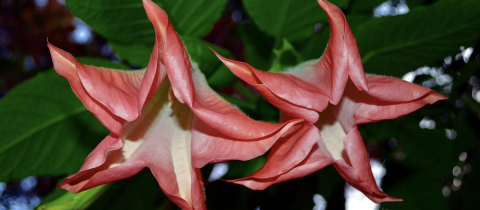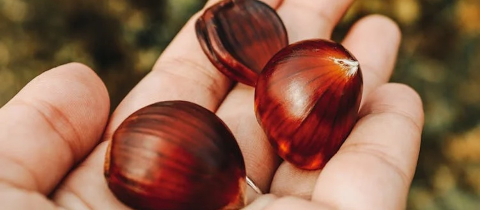You’re likely familiar with an everyday, small round, green lime. Whether in a margarita, with your Thai food or adorning your glass of soda, they’re a common enough culinary occurrence. But have you ever noticed that they don’t have any seeds? Limes seem pretty much like a smaller, rounder, tarter lemon, and for many cooking purposes, are interchangeable, so why do lemons have seeds but not limes?
It’s not because they’re GMO, and organic limes are similarly seedless. It’s because limes reproduce via parthenocarpy as opposed to most fruits which need to be pollinated, aka fertilized. While “normal” fruit develops when a flower’s egg cell is fertilized by pollen, parthenocarpic or seedless fruits develop without this external input.
The vast majority of limes eaten in North America are Persian limes (Citrus × latifolia), which are parthenocarpic. That x in their Latin name means they are a hybrid, resulting from a cross between the Key lime of pie fame (Citrus × aurantiifolia) and a lemon (Citrus × limon). But, as their Latin names tell us, the Persian lime’s parents are also crosses, between a Micrantha (Citrus hystrix) and a Citron (Citrus medica) in the case of the Key lime, and between a Citron and a bitter or Seville orange (what marmalade is made from) (Citrus × aurantium) in the case of the lemon. Bitter oranges are, of course, also a hybrid, thankfully finally of two non-hybrid species, the pomelo (Citrus maxima) and the mandarin orange (Citrus reticulata).
If I’ve totally lost you, this chart might help.

Photo source: https://en.wikipedia.org/wiki/Citrus_taxonomy#/media/File:Citrus_hybrids.svg
The important takeaway is that Persian limes are just one particularly popular offspring in a large family of citrus fruits that include tons of different types of fruits. Citrus fruits that are small and green tend to be called limes, forming a collection that includes: ginger limes, no less than 7 types of Australian limes, the kaffir lime, Citrus limetta, which is known alternatively as a sweet lemon or sweet lime, the Makrut lime, the aforementioned key lime, the winged lime, the Philippine lime, the Palestine sweet lime, and even more. Not all of them are parthenocarpic, so not all of them are seedless!
Parthenocarpy can develop for a few reasons, including chromosomal imbalances or problems with eggs or sperm. In the case of Persian limes, they have three sets of chromosomes instead of two.
Seedless fruit is hugely valuable commercially. From bananas to eggplants, parthenocarpic fruits are popular because consumers don’t like eating seeds. But their cultivation requires some fancy work on the parts of farmers. Some parthenocarpic fruits occur naturally, but Persian limes almost never. To produce them, farmers instead use a technique called grafting, where a branch of a seedless lime tree is attached to a new tree, creating a clone.
Just to further complicate the narrative, there are a few plants that are sometimes called limes but aren’t really, like: the Rangpur; Wild lime (Zanthoxylum fagara) a shrub that isn’t even citrus; Spanish lime (Melicoccus bijugatus) a stone fruit in the soapberry family; and finally, the trees belonging to the genus Tilia, the North American varieties of which are known as basswood, the European ones as linden, are called lime trees is the United Kingdom, despite being very distant relatives of the citrus trees.
I’ll leave you with this little-appreciated fact that throws the whole classification of limes as small green citrus fruits into further disarray — Persian limes are only green when not ripe.







